39 understanding nutritional facts on labels
Understanding Nutrition Labels - Medical News The nutrition label resembles a table and is printed in black and white mostly on the back or the side of the packed product. It is sometimes referred to as a nutritional facts panel. It has four ... Reading Nutrition Facts Labels Like a Pro: Dietitian Tips ... - NutriSense Nutrition labels provide valuable information about the food we're eating, including the number of calories, fat, carbohydrates, protein, essential vitamins like vitamin D and minerals like potassium and magnesium it contains.
How to Read Nutrition Facts Labels the Right Way - GoodRx Nutrition Facts labels are required to list the total fat, saturated fat, and trans fats on packaged food products. It's important to choose foods with the right kinds of fats. Here are the differences between the fats you'll see on the label. Bad fats Saturated and trans fats are the less healthy types of fats.
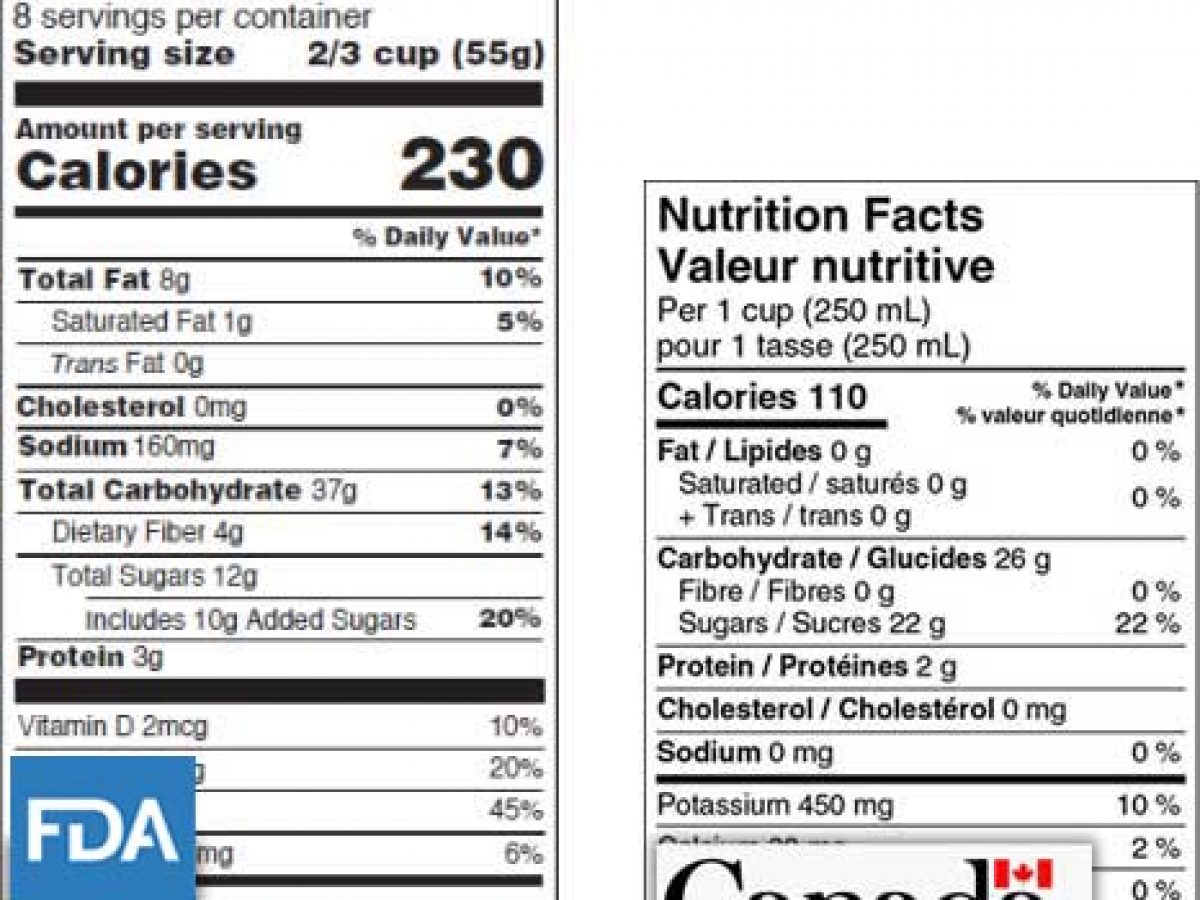
Understanding nutritional facts on labels
Food Labels 101: Understanding the Nutrition Facts Label A sodium level of 140 mg or less on the nutrition facts label is considered low sodium. This is an essential number to look for when reading the label. Total Carbohydrates - Fiber and Sugar Foods high in fiber can be beneficial to a healthy diet, as fiber helps manage blood sugar levels and can lower cholesterol. Understanding Food Labels | Nutrition facts, ingredients, claims, high Reading food labels is a must when food shopping! Prepackaged foods are required to have nutrition labels. Food labels are voluntary for "fresh foods" such as raw meats, fish, poultry, fruits, and vegetables. The Nutrition Facts on the food label must show the following information: u0007Serving Size. A uniform amount for all labels. Understanding nutrition facts on food labels - SheKnows For example, if you eat 2,000 calories per day, you should be having roughly 600 calories for each meal and two 100-calories snacks. Or, simply eat six small meals per day each consisting of the ...
Understanding nutritional facts on labels. Understanding Nutrition Facts Food Labels - VEBA Resource Center What can you learn from food labels? When a food comes in a package, look at the Nutrition Facts label and ingredient list on the package. Here are some things to look for: Serving size. All of the nutrition information on a food label is based on that serving size. So you'll need to adjust the other numbers if you eat more or less. Total ... The New Nutrition Facts Label | FDA The U.S. Food and Drug Administration (FDA) has updated the Nutrition Facts label on packaged foods and drinks. FDA is requiring changes to the Nutrition Facts label based on updated... The Basics of the Nutrition Facts Label - Academy of Nutrition and ... The Nutrition Facts applies to the serving size, so if the serving size is one cup and you eat two cups, you are getting twice the calories, fat and other nutrients than what is listed on the label. Find out how many calories are in a single serving and compare it to your total calorie allowance for the day. Understanding Nutrition Facts on Food Labels - enKo Products A nutrition label shows you a food product's nutrient content. A nutrient belongs to one of two groups: A carbohydrate, protein, or fat, which can serve as your tissues' building blocks. These subgroups are also the tissues' energy sources, and energy derived from food is expressed in calories.
Learn How the Nutrition Facts Label Can Help You Improve Your Health Nutrients Required on Label Vitamin D and potassium values are required. Calcium and iron will continue to be required. Vitamins A and C will no longer be required but can be included on a voluntary basis. Slight Decrease in Sodium Allowance The daily limit for sodium decreased slightly from 2,400 mg per day to 2,300 mg per day. Understanding Food Nutrition Labels | American Heart Association When the Nutrition Facts label says a food contains "0 g" of trans fat, but includes "partially hydrogenated oil" in the ingredient list, it means the food contains some trans fat, but less than 0.5 grams per serving. So, if you eat more than one serving, you could end up eating too much trans fat. Understanding the Nutrition Facts Label - Know Diabetes by Heart No label! You can look up the nutrition information via Google or a food application and determine it has about 20 grams of carbs. Adding the two together equals 57. Now let's say your insulin to carb ratio is 15. You would divide 57 by 15 to get 3.8 units (rounding to 4 units of insulin for that meal). Nutrients How To Understand Nutrition Facts Labels: A Guide To Food Labels The first thing you should know about nutrition label basics is that the top portion of food labels usually contain information that is specific to the product itself. This information is often about the correct serving size, caloric content, and the actual information about nutrients.
Understanding a Nutritional Facts label for new Product Development The nutritional information label also provides a column of values called per cent % Daily Value (% DV). It denotes how much of a nutrient is present in one serving of food which needs to be consumed one day. This value is based on an average daily diet of 2000 calories. Understanding Food Labels - The Nutrition Source The Nutrition Facts Label The Nutrition Facts label is overseen by the U.S. Food and Drug Administration (FDA) and was first mandated under the Nutrition Labeling and Education Act of 1990 to help consumers make quick, informed food choices. It has undergone revisions, with the latest update released in 2016. Importance of Nutrition Labels | Healthy Eating | SF Gate Importance of Nutrition Labels. Nutrition facts labels tell you about the nutrition of a particular product. This information includes serving size, number of servings in the package, calories per serving and the amount of various nutrients contained in the product. Once you understand the labels, they can help you ... Understanding Nutrition Facts Labels - Phyto Active Foods They consist of fats, carbohydrates and protein. The estimated caloric breakdown for each of these macronutrients is as follows: Fats contribute about 9 calories per gram; carbohydrates and proteins each supply roughly 4 calories per gram. Recommended daily intake amounts for these macronutrients vary from person to person.
Understanding the Nutrition Facts Label - FamilyEducation Understanding the Nutrition Facts Label. Most packaged foods have a Nutrition Facts label. For a healthier you, use this tool to make smart food choices quickly and easily. ... Look at the calories on the label and compare them with what nutrients you are also getting to decide whether the food is worth eating. When one serving of a single food ...
Understanding Ingredients on Food Labels - American Heart Association Understanding Ingredients on Food Labels. Food labels are an important source of information about calories and the nutritional value of the foods you eat, a crucial tool in building a heart-healthy diet. The Nutrition Facts information is always displayed in the same orderly fashion and helps you understand how much of certain nutrients that ...
The Nutrition Facts Label: How to Read it - Molassity Pomegranate Molasses Nutrition Facts Label Breakdown A nutrition fact label is broken down into three sections. Each one serves a purpose and is broken down further into smaller parts. This gives consumers a more detailed report of what's in the food they're about to buy. Here's how each section benefits the consumers: 1. Serving Information
How to Understand and Use the Nutrition Facts Label | FDA Dietary fiber, vitamin D, calcium, iron ad potassium are nutrients on the label that Americans generally do not get the recommended amount of. They are identified as nutrients to get more of....
Food Labels | CDC - Centers for Disease Control and Prevention If you eat the whole thing, you are eating 8 times the amount of calories, carbs, fat, etc., shown on the label. Total Carbohydrate shows you types of carbs in the food, including sugar and fiber. Choose foods with more fiber, vitamins, and minerals. Choose foods with lower calories, saturated fat, sodium, and added sugars. Avoid trans fat.
How to understand NUTRITIONAL FACTS label? - Lovely Tiny Things We all must have noticed some similar type of label on the backside of every food or beverages product. This is called Nutritional Facts Label, and it is a mandatory guideline for every food and beverage manufacturing company from the Food & Drug Administration. This label is been given on the product so that a consumer can make an informed and healthy choice which is related to its health ...
Nutrition Facts: How to Read Nutrition Labels - bodyandsoulau The nutrition label lists total fat, saturated fat, and trans fat. It's the last two you want to focus on. Saturated fat is the kind you'll find in a burger, hot dog, or glass of whole milk....
How to Understand The Nutrition Facts Label - AFPA Fitness The FDA has developed a 4-step process to reading and understanding the nutrition facts label. Serving information. At the very top of the label, you will see how many servings are in a container and the size of a serving, usually represented in cups or tablespoons (volume) and weight. ... Calories are perhaps the most famous element of the ...
How to Read Everything on the Nutrition Facts Label - Food Network This carries over to all the other nutrients on the label. If 1 serving of a food has 120 mg of sodium, it can technically be labeled as a "low sodium" food. However, if you eat 3 servings,...
Understanding Nutrition Labels and Nutrition Facts - Raley's Family ... The Nutrition Facts label is a tool that consumers can use to help make food choices that are best for their individual health. However, it can be a bit confusing, especially when it comes to added sugars in foods until the new FDA-required nutrition facts labels fully go into effect. Serving Size Percent Daily Value (%DV) Sugar
Understanding nutrition facts on food labels - SheKnows For example, if you eat 2,000 calories per day, you should be having roughly 600 calories for each meal and two 100-calories snacks. Or, simply eat six small meals per day each consisting of the ...
Understanding Food Labels | Nutrition facts, ingredients, claims, high Reading food labels is a must when food shopping! Prepackaged foods are required to have nutrition labels. Food labels are voluntary for "fresh foods" such as raw meats, fish, poultry, fruits, and vegetables. The Nutrition Facts on the food label must show the following information: u0007Serving Size. A uniform amount for all labels.
Food Labels 101: Understanding the Nutrition Facts Label A sodium level of 140 mg or less on the nutrition facts label is considered low sodium. This is an essential number to look for when reading the label. Total Carbohydrates - Fiber and Sugar Foods high in fiber can be beneficial to a healthy diet, as fiber helps manage blood sugar levels and can lower cholesterol.
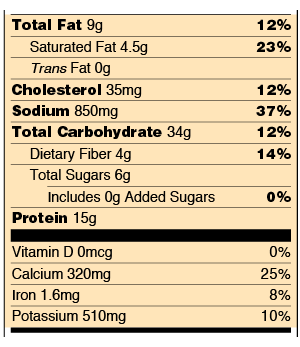


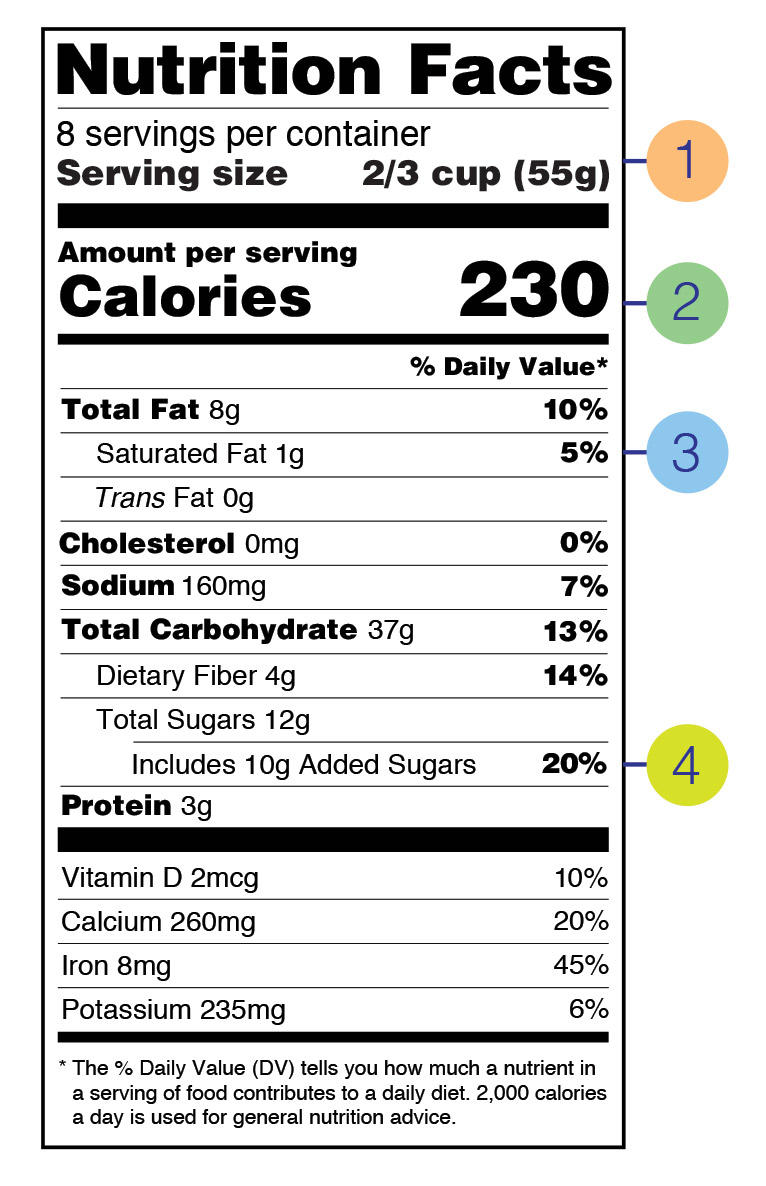



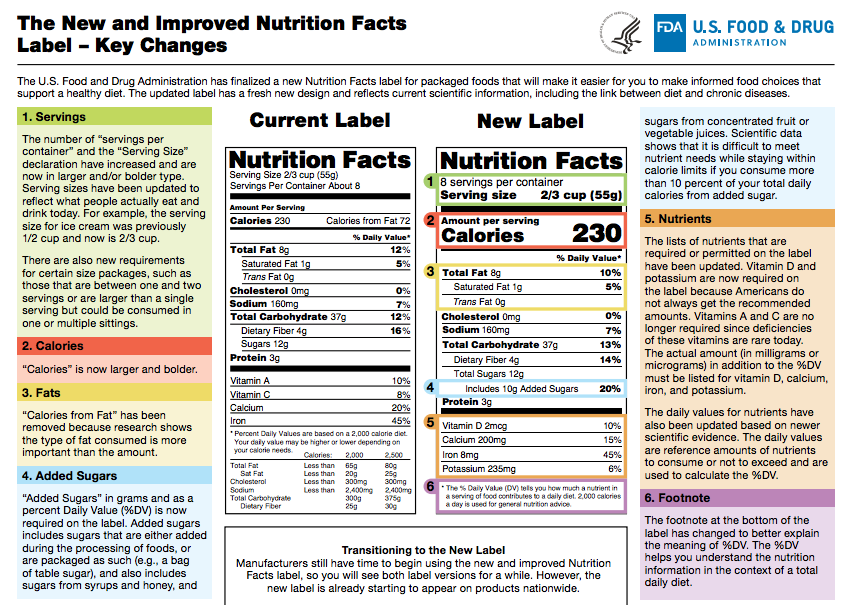
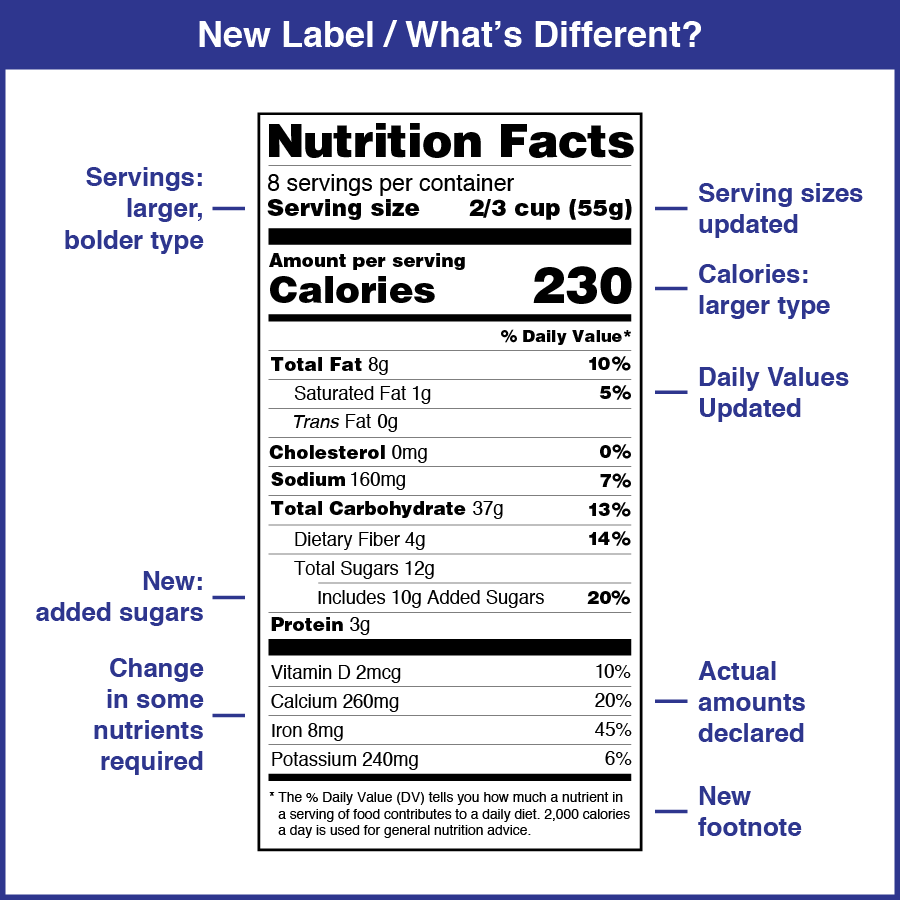
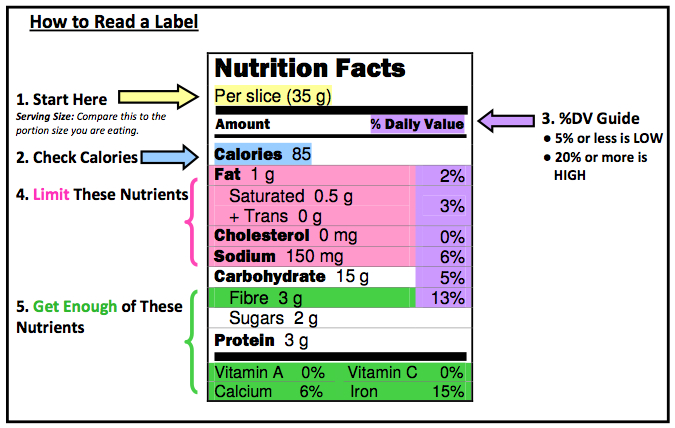

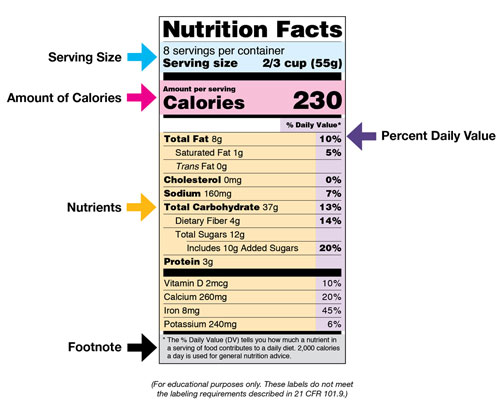
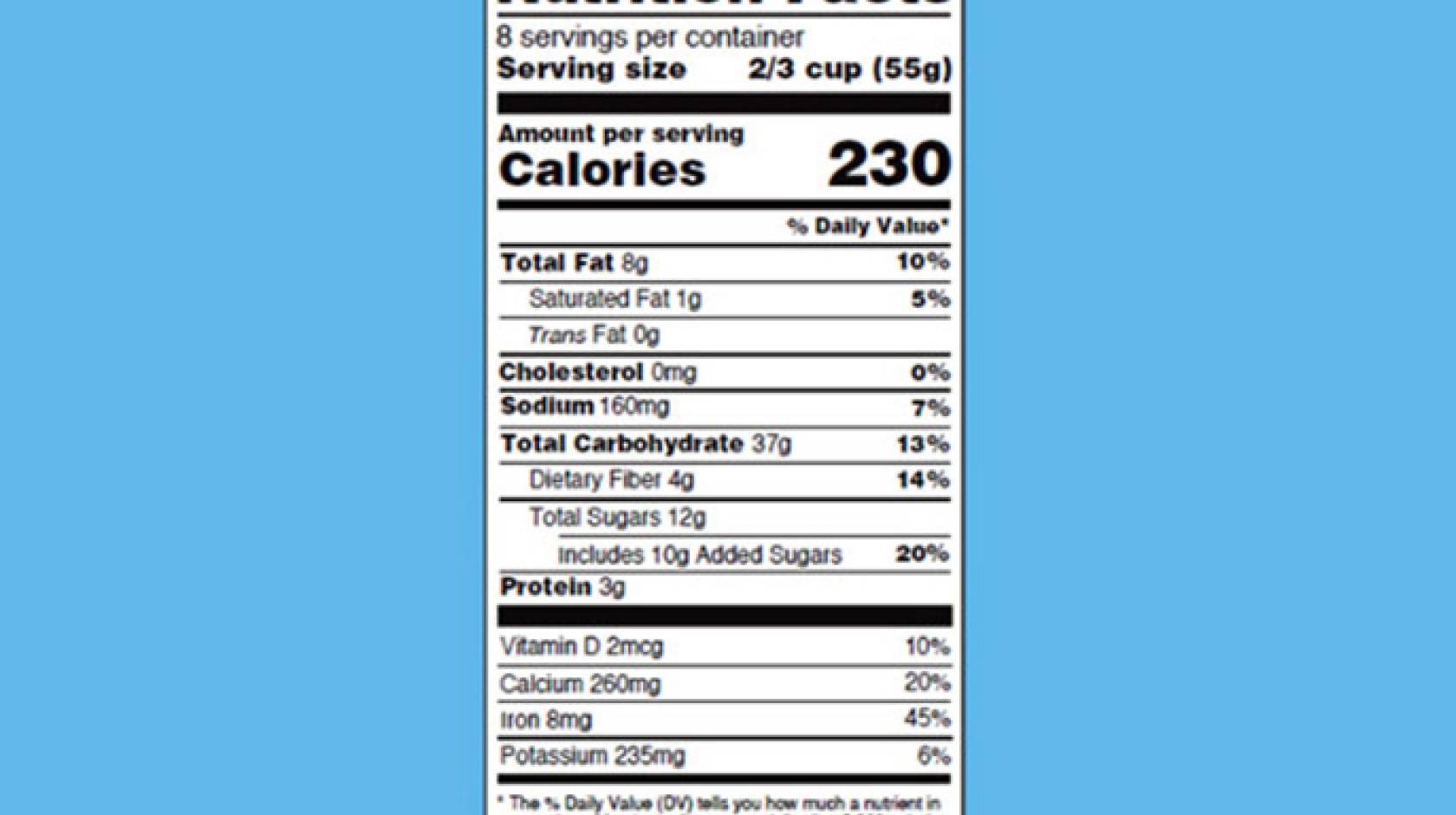

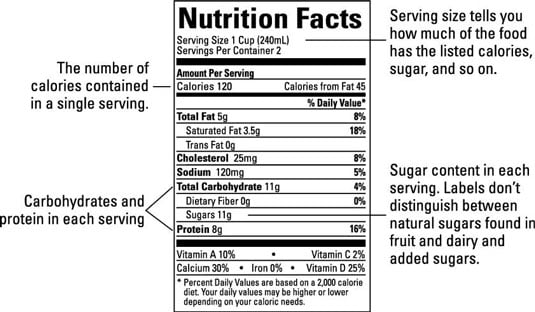
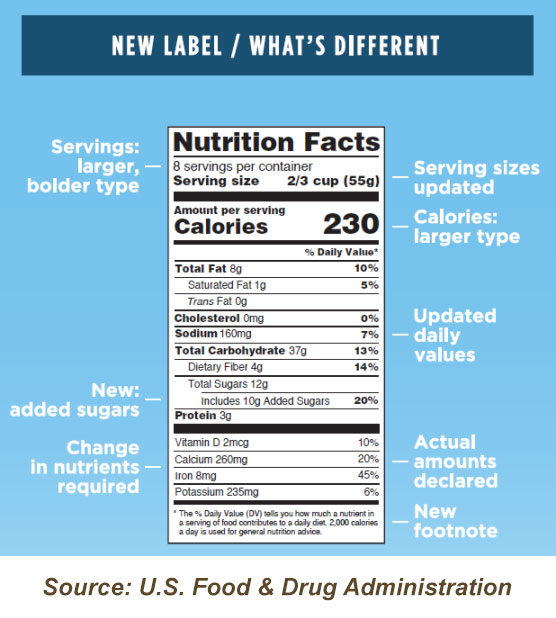
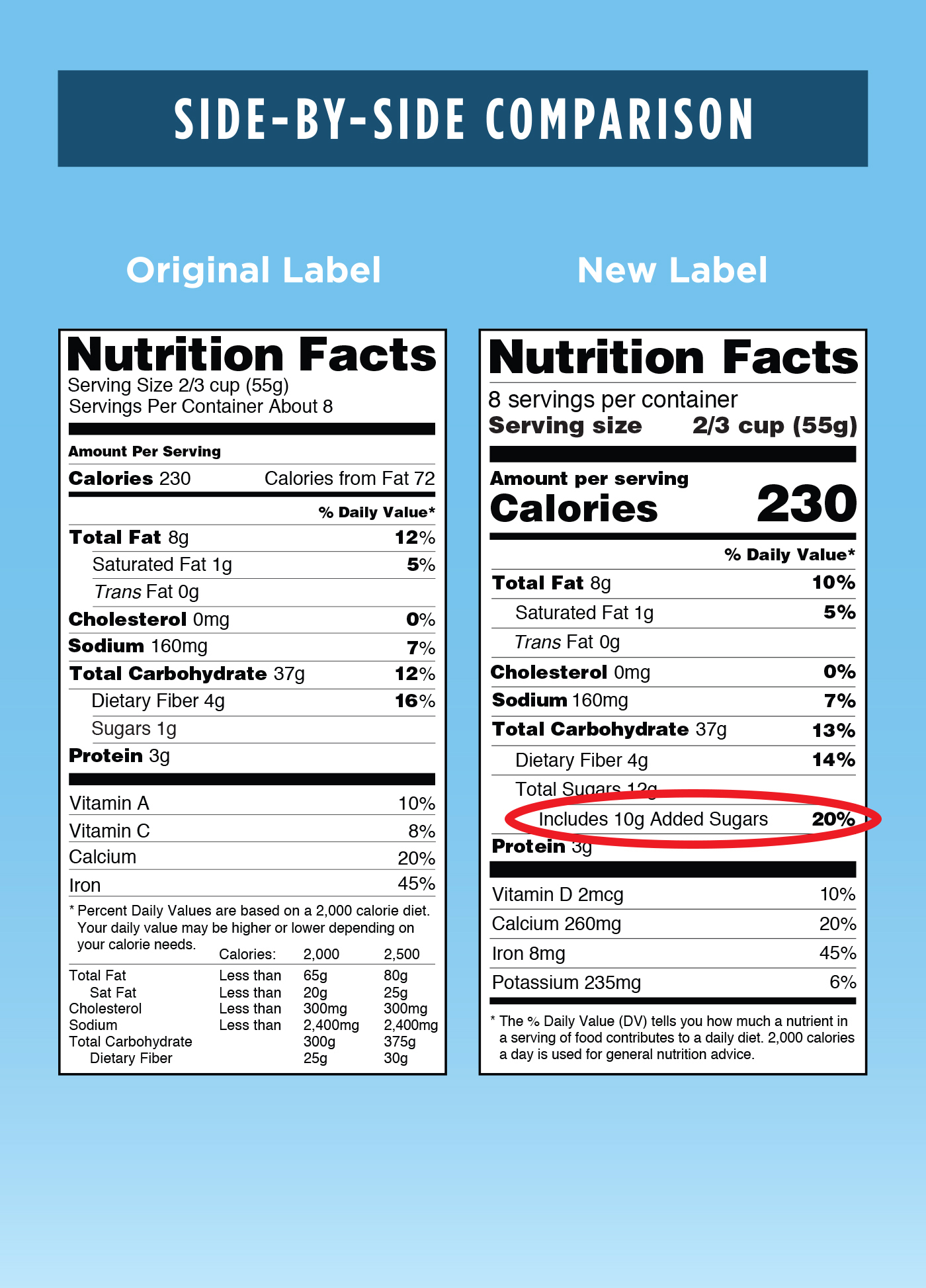


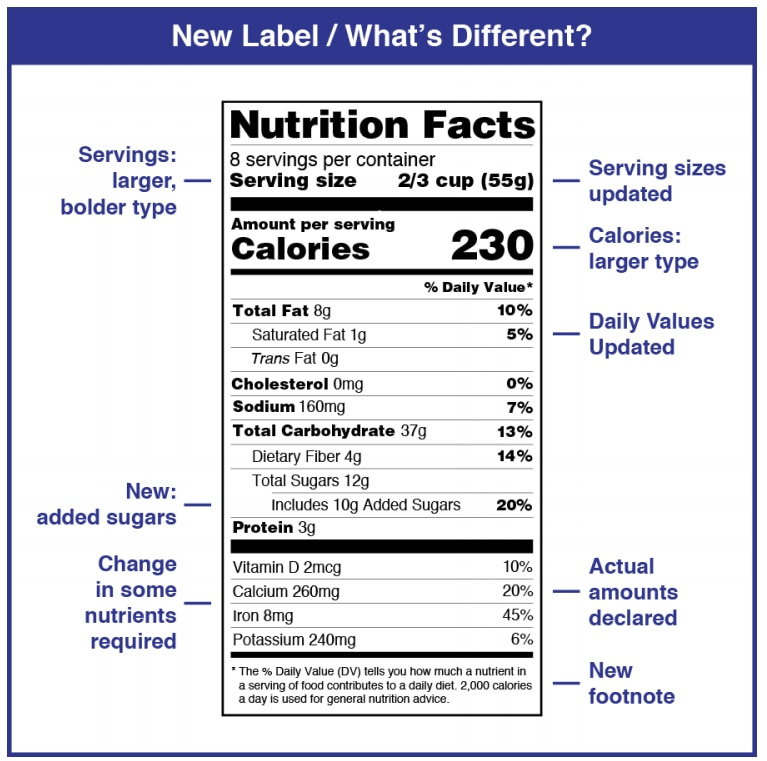
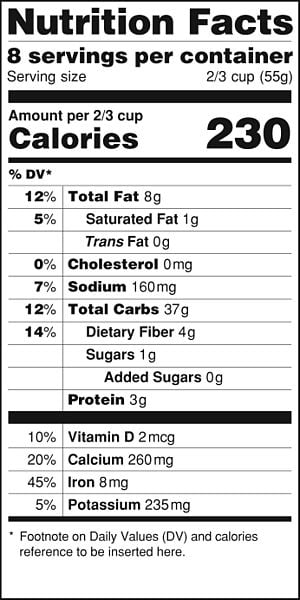
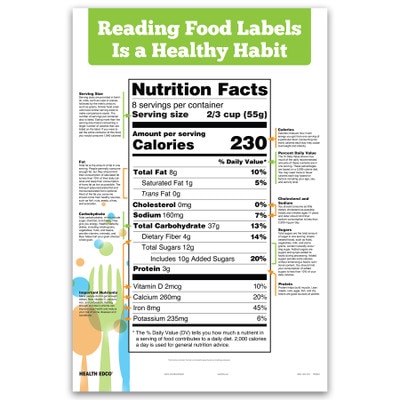

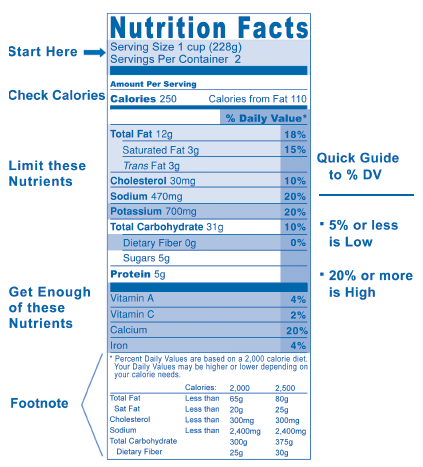


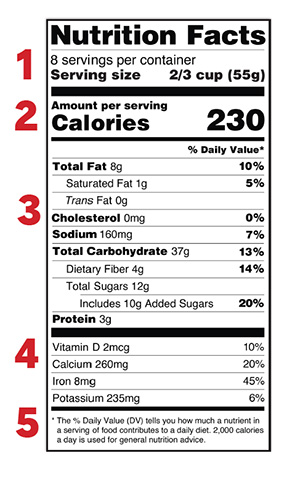




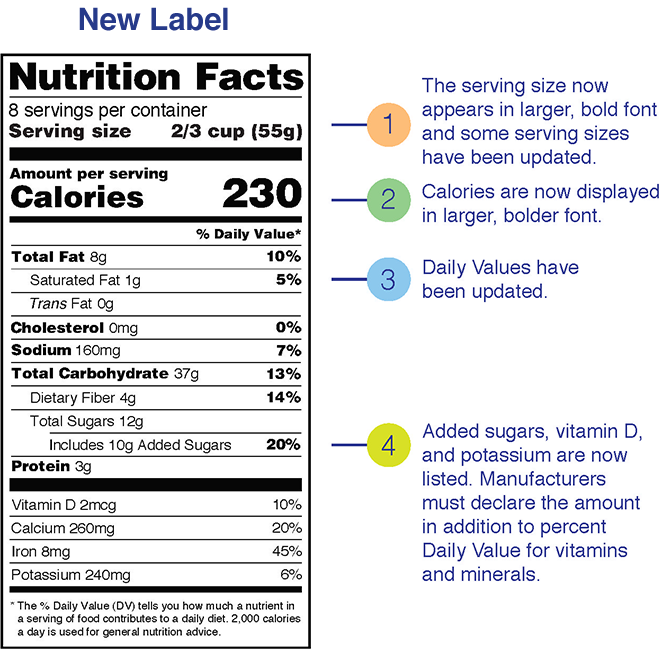

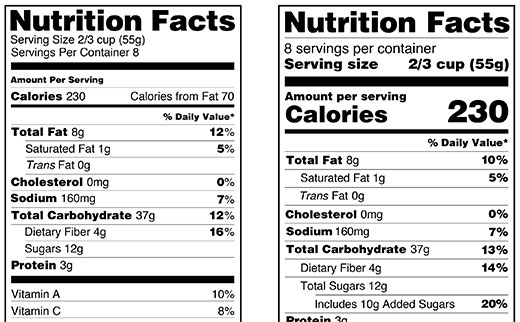
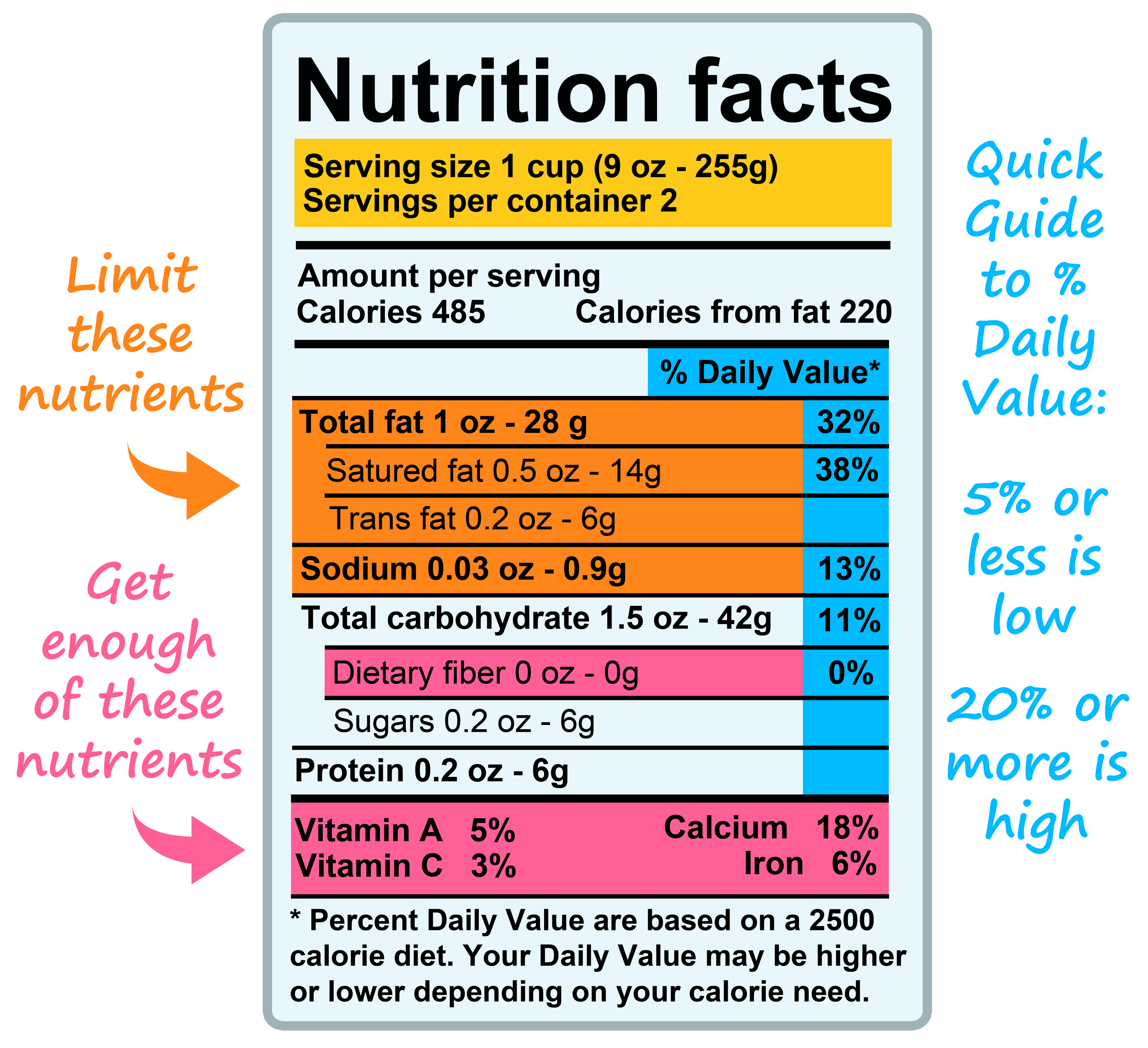

Post a Comment for "39 understanding nutritional facts on labels"